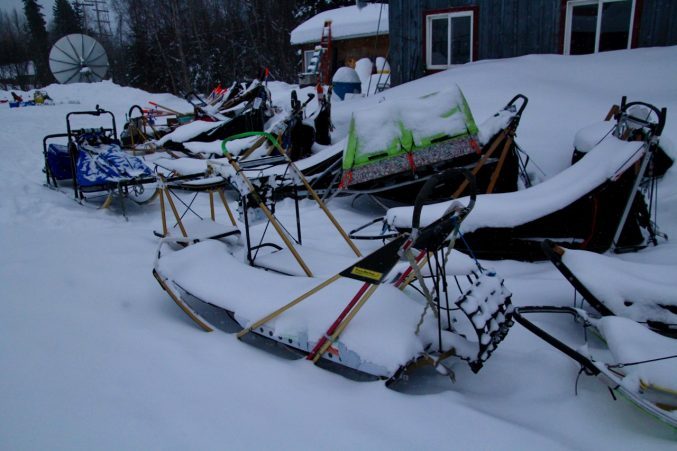
Photo Credit: Terrie Hanke
When I find myself in conversation with students and teachers about the Iditarod, I typically get asked the same questions: How long is the race? How long does it take a musher to complete the race? What do the dogs eat? How cold does it get? Is it always dark in Alaska? What are the rules? Do you get to play with the dogs?
I always enjoy sharing the answers to all of these questions and furthermore I like addressing all of the follow-up questions. A topic which always gets brought up is the sled and how it’s designed.
The sled, much like any other technology, has evolved over the years. For thousands of years, sleds have been used for a variety of reasons which include a means of transportation and carrying freight.
The Inuit people have been using and building sleds for thousands of years. Aside from the common practice of using wood as a primary material, traditional Inuit sled designs have been known to include materials such as antler, bone, ivory, moss, frozen fish, and animal hides. Nowadays, sleds are certainly still designed using wood, and some people continue to use whatever materials they have at hand including some of the aforementioned. With the evolution of sled design and purpose, mushers now often use sleds that are constructed using materials which include steel, plastics, titanium, aluminum, carbon fiber and even hockey sticks. When the race first started, mushers would typically use sleds constructed primarily out of wood.
Generally speaking, there are two types of sleds: basket sleds and toboggan sleds. Basket sleds typically have a flatbed that is raised above the runners. This area allows for items, and in some cases tired dogs, to be stored. Mushers will typically use a sled bag made out of a nylon or cordura to store their required gear. Toboggan sleds share some similarities with basket sleds; however, a significant difference is that the bed is directly mounted to the runners.
According to Iditarod race rule 15, “A musher has a choice of sled subject to the requirement that some type of sled or toboggan must be drawn. The sled or toboggan must be capable of hauling any injured or fatigued dogs under cover, plus equipment and food.”
In order to have your students see what a sled looks like and see how complex the design is, show them this video of Cody Strathe explaining the different parts of a musher’s sled.
Also, use this STEM lesson with your students that will challenge them to use the Engineering Design Process while designing a sled.
Iditarod lesson- design a sled


